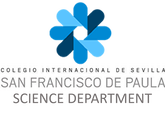Lab sessions and blog tasks
Lab session 1 - Paper balls
|
Individually:
| |||||
Lab session 4 - Redox titration
|
Each group will use the class average to calculate the concentration of an H2O2 solution.
|
| ||
Lab session 3 - Boiling and freezing points
|
Each group will choose 1 of the 2 tasks and present their findings in a blog.
|
| ||||
Lab session (During class time) - Solutions
|
Each group should download this document and follow the instructions.
|
| ||
Lab session 2 - Intermolecular forces
Each group will use a different method to investigate the relationship between IMF´s and different properties of a chemical. Click on the links below to find the appropriate document:
What is required in the blog?:
What is required in the blog?:
| 3._intermolecular_forces_lab.docx |
Lab session (During class time) - Schlenk tubes and the vaccum line
In this lab you will be shown how to set up a Schlenk tube and how to use it with a vacuum line. Your first blog will require:
- Title
- Objective
- Background information
- A step-by-step guide to setting up a Schlenk tube and using the vacuum line. (Must include photos and videos)
|
For instructions download this document -->
|
| ||
Lab session 1 - The properties of substances
This year, your lab reports will be completed in groups as multi-media blogs. Each group must set up a blog on blogger.com and for each lab session you will be required to update your blog with the necessary information. This information is likely to include:
Some labs will require the use of logger-pro to record data. Please download the software here:
http://www.vernier.com/support/updates/logger-pro/
For help with referencing, visit:
http://easybib.com/
http://www.citethisforme.com/
For help drawing graphs:
- Title, lab objective, background information, data stored and presented in a suitable format, conclusions, pictures/videos/diagrams and r.eferences.
Some labs will require the use of logger-pro to record data. Please download the software here:
http://www.vernier.com/support/updates/logger-pro/
For help with referencing, visit:
http://easybib.com/
http://www.citethisforme.com/
For help drawing graphs:
| draw_a_perfect_graph.docx |

